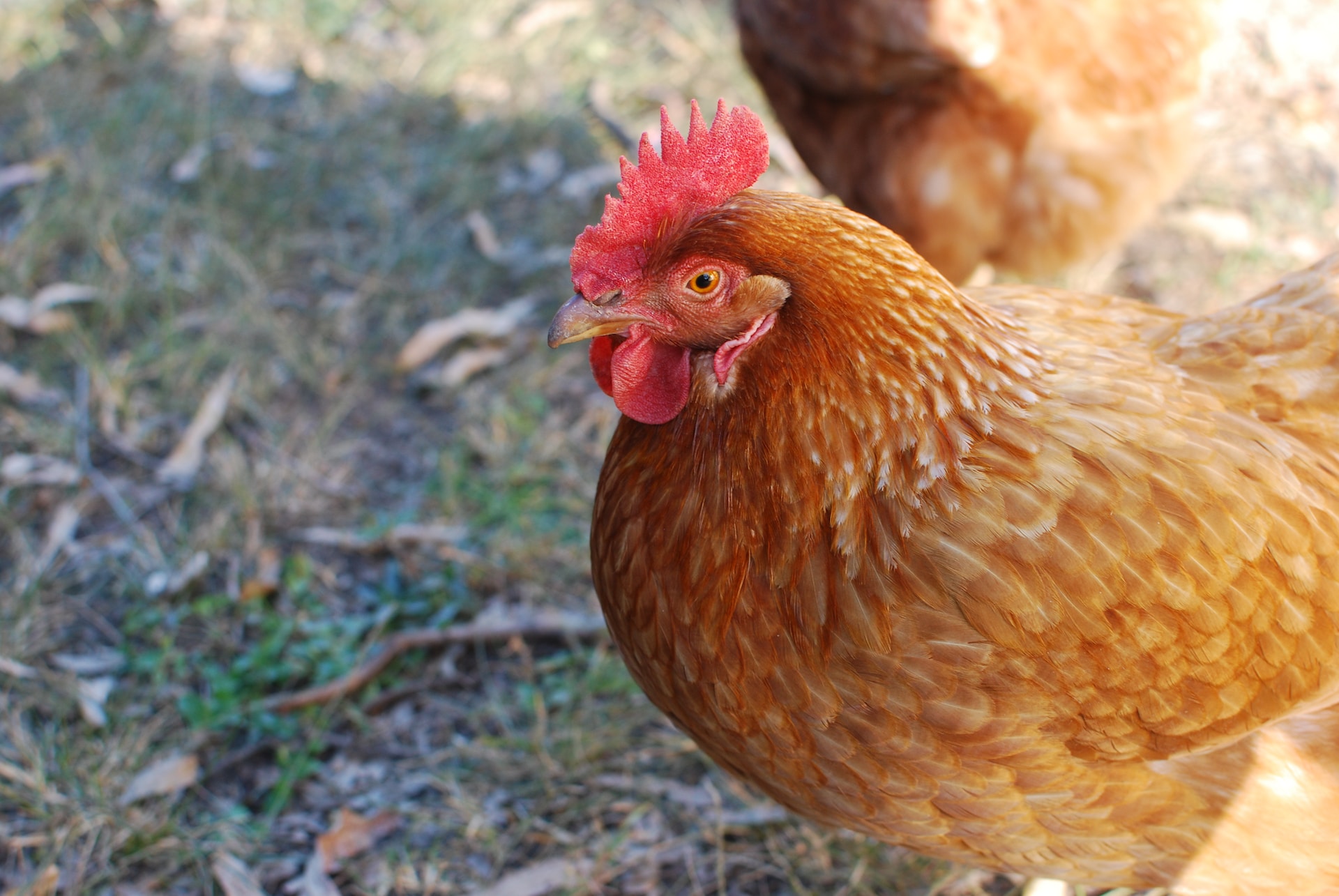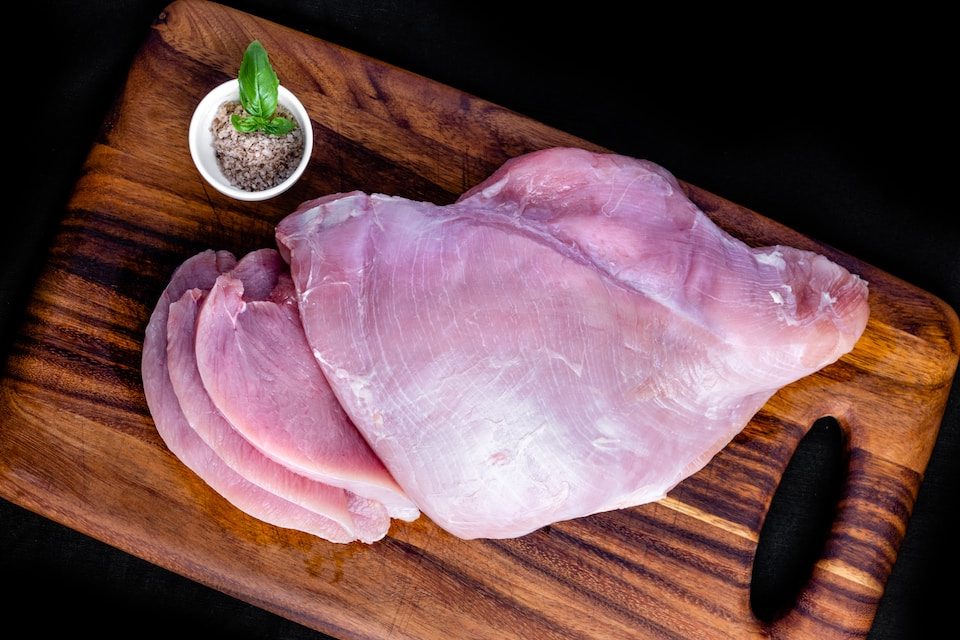Have you ever noticed white stripes on your store-bought chicken breasts and wondered what they are? These lines, known as ‘white striping,’ are a condition often seen in chickens bred for larger breast meat.
This blog post will elucidate why these stripes appear, their impact on the quality of your chicken, and how to identify them before purchase. Ready to become an informed consumer? Let’s dive right in!
Key Takeaways
- White stripes on chicken breasts, known as ‘white striping,’ are caused by excess fat in the muscle tissue.
- While white striping does not pose a health risk, it can affect the taste and texture of the meat.
- Choosing organic or free – range chicken and smaller varieties can help reduce the chances of encountering white striping.
- White striping increases the fat content in chicken, but only a small percentage of affected birds have severe cases.
Understanding White Striping in Chicken
White striping in chicken is a condition characterized by the presence of white stripes running parallel to the muscle fibers on chicken breasts. But what causes these white stripes and are they safe to eat? Let’s find out.
What Causes White Stripes?
White stripes show up on chicken because of fat. As the bird grows, fat gets into the muscles. This happens a lot with birds that grow fast in large farms. But slow-growing chickens can have it too, even if they are organic or free-range.
In fact, studies found white striping in 12 to 43 percent of all chicken flocks! That’s quite a bit! But don’t worry, only a small number (3 to 6 percent) have really bad cases.
Is It Safe to Eat?
You may wonder if eating chicken with white stripes is safe. Good news! There are no known health risks from eating this kind of chicken. So, it’s not a danger to your body. The white lines are more about the quality of the bird and how it was raised than your safety.
White striping shows up in chickens that have been bred to grow large very fast. It’s still safe to eat but watch out because it can change how your food tastes and feels when you eat it.
If you want to avoid these stripes, try buying organic or free-range chicken instead. You can also ask your butcher for help picking out top-quality meat without any striping.
Identifying White Stripes on Chicken
Appearance and Texture: How to Spot Those White Stripes
When it comes to identifying white stripes on chicken, appearance and texture are key indicators. These stripes can be easily spotted on the surface of the chicken breast, resembling thin strings or deposits of fat.
The meat may appear discolored, with a mottled or streaked appearance.
To check for white stripes, gently feel the surface of the chicken breast with your fingertips. If you encounter any raised or rough areas, this is likely an indication of white striping.
Additionally, look closely at the color and texture of the meat. If you notice any visible pockets of fat within the muscle fibers, this could also be a sign of white striping.
Avoiding Eating Chicken with White Stripes: Tips for Selecting Quality Meat
While white striping does not pose a health risk and is safe to eat, many people prefer to avoid it due to its impact on taste and texture. To minimize your chances of getting chicken with white stripes.
How to Check for White Stripes
To check for white stripes on chicken, follow these simple steps:
- Look for Appearance and Texture:
- Inspect the chicken meat closely for any white lines or streaks running along the surface.
- Feel the texture of the meat with your fingers. White striping can sometimes cause a rough or stringy texture.
- Examine the Fat Content:
- Check for excessive fat marbling in the chicken. White striping often leads to higher fat content in the muscle tissue.
- Choose Organic or Free-Range Chicken:
- Opt for chicken labeled as organic or free – range, as these types of chickens are less likely to have white stripes.
- These chickens are raised in more natural conditions and tend to have healthier muscle development.
How to Avoid Eating Chicken with White Stripes
To avoid eating chicken with white stripes, here are some tips:
- Look for organic or free-range chicken: These chickens are often raised under better conditions and have a lower likelihood of developing white stripes.
- Choose smaller chicken varieties: Smaller chickens tend to have slower growth rates, reducing the chances of white striping.
- Consult with a trusted butcher: They can provide information on the sourcing and quality of the chicken they sell, helping you make an informed choice.

The Impact of White Stripes on Nutrition and Flavor
The presence of white stripes on chicken breasts can have an impact on both the nutrition and flavor of the meat.
Fat Content and Nutrition
When it comes to the impact of white striping on the nutritional content of chicken, it’s essential to understand that these stripes are fat deposits. This means that chicken with white striping contains more fat compared to chicken breasts without the stripes. While the increase in fat content may not be overly significant, it is still something that health-conscious consumers need to consider. This table below provides a comparison of the nutritional content between chickens with and without white stripes.
| Nutritional Component | Chicken Without White Stripes | Chicken With White Stripes |
|---|---|---|
| Protein Content | Higher | Slightly Lower |
| Fat Content | Lower | Higher |
| Total Calories | Lower | Higher |
Remember, these are general observations and the actual nutritional content can vary based on other factors as well. It’s also vital to note that while white striping can increase a bird’s fat content, only 3 to 6 percent of affected birds have severe cases of white striping. As a meat lover, while you may want the flavor that comes with fat, it’s important to balance that with a desire for lean proteins.
Effects on Taste and Texture
The presence of white stripes in chicken breasts can impact the taste and texture of the meat. These white stripes result from fat deposition in the muscle, which can make the meat less tender and chewier.
In severe cases, chicken with white striping may have a tougher and less appealing texture. The fast growth rates of factory-farmed chickens contribute to the occurrence of white striping, further affecting taste and texture.
Surveys have shown that between 12 and 43 percent of commercial chicken flocks are affected by white striping, suggesting that it has a widespread impact on taste and texture. While safe to eat, some consumers may not prefer the altered texture and taste caused by white striping.
Conclusion
In conclusion, the white stripes you may see on chicken breasts are caused by excess fat in the muscle tissue. While it can affect the texture and taste of the meat, it is not considered a health risk.
To avoid chicken with white striping, look for organic or free-range options and support local farmers who prioritize quality breeding practices. Choosing smaller varieties of chicken may also help reduce the chances of encountering white striping.
Greetings!
With over two decades of diverse experience in the meat industry, I proudly stand as an expert in all things meat. My journey commenced with a strong foundation in hospitality, where I honed my culinary skills as a chef in prestigious restaurants and on luxurious superyachts worldwide.
However, my true passion lies in the art of butchery. Throughout my extensive career, I have had the privilege of working with renowned meat purveyors and mastering the craft of meat cutting and preparation. From breaking down whole carcasses to meticulously selecting prime cuts, my butchery expertise is at the core of my meat knowledge.
Having immersed myself in various cultures and cuisines, I have honed my skills to deliver exceptional dining experiences, crafting delectable dishes that celebrate the natural flavors of different meats. Whether it’s sourcing the finest meats for discerning clients or sharing valuable tips on meat selection and cooking, I take pride in elevating the meat experience for both professionals and enthusiasts.
My journey has taken me from the bustling kitchens of top-rated restaurants to the heart of meat processing facilities, gaining insights and honing my skills to become a true meat connoisseur. Now, I am enthusiastic about sharing my expertise, offering valuable insights on meat selection, cooking techniques, and the art of butchery.
















